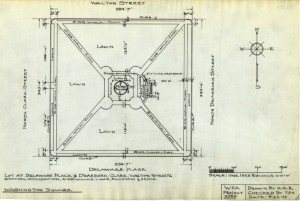Part 1 of Thomas Dyja's The Third Coast, this year's One Book One Chicago selection, focuses on the late 1930s in Chicago. Dyja crams a lot that's fascinating into those first four chapters, but even such a big book can't possibly cover it all. What else was happening in Chicago in the late 1930s? Here's one answer found in CPL's Special Collections.
Dyja mentions the Works Progress Administration (WPA), the massive New Deal program that employed so many out of work artists, writers and others. One beneficiary of the WPA was the Chicago Park District (CPD). CPD was formed in 1934 by consolidating 22 independent park commissions around the city. CPD immediately answered the call for WPA funding applications by submitting countless construction, renovation and other physical improvement projects throughout the park system.
One project was not like the others. Project No. 3239 was known as the White Collar Project. This important project did not change the landscape of a physical park. Rather, according to the 1936 CPD Annual Report, the scope of 3239 was the "consolidation of all records...taken over from the 22 superseded park districts...[and] the production of permanent record plans in the form of ink tracings of all buildings, heating and ventilating and electrical equipment and installations, where such records and plans were found to be inadequate or non-existent...." This work was extended and performed under other WPA project numbers, too.
In 2013, CPD's collection of historic drawings was transferred to CPL. The WPA tracings form a significant portion of this amazing collection. No doubt the WPA draftsmen who made the drawings were aware of the work of some of Dyja's major players: Mies van der Rohe and Laszlo Moholy-Nagy.




Add a comment to: #OBOC Part 1: What Else Was Happening?